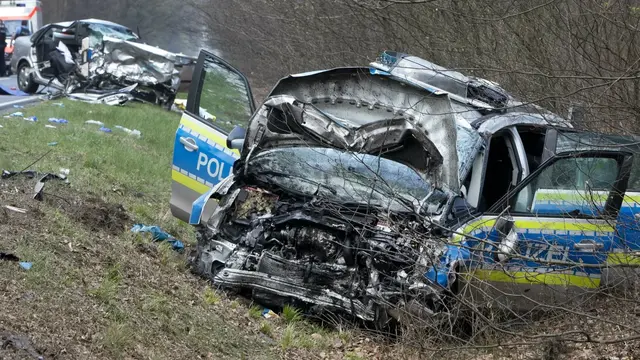Germany—September 2024: A somber weekend unfolded across the country as three separate accidents involving small aircraft resulted in multiple fatalities and injuries. The incidents, which occurred in different regions, have sent shockwaves through Germany’s aviation community and raised questions about safety protocols for private aviation. Investigations into each accident are underway, but authorities remain cautious about drawing conclusions until further evidence is collected.
A Weekend of Tragedy
Germany is no stranger to aviation, with a rich history of flight and a well-established network of airfields and airports. However, the events of this weekend have served as a stark reminder of the risks inherent in even the most routine of flights. Between Saturday and Sunday, three separate accidents involving small planes left communities grieving, aviation authorities scrambling for answers, and families devastated by unexpected loss.
The accidents occurred in different parts of the country, each with its own tragic circumstances. Despite the geographical separation, the emotional toll was felt nationwide as the news of the crashes spread.
Accident 1: Bavaria’s Grim Morning
The first of the three accidents occurred early Saturday morning in Bavaria. A small single-engine plane crashed in a field near the small town of Bad Aibling. According to initial reports, the aircraft, a Cessna 172, had just taken off from a nearby airfield before it encountered engine trouble.
Eyewitnesses described hearing unusual engine noises shortly after takeoff, followed by the aircraft veering sharply before plummeting into the field. Emergency services rushed to the scene, but unfortunately, both occupants, a pilot and a passenger, were pronounced dead upon arrival.
Local authorities have cordoned off the area, and the German Federal Bureau of Aircraft Accident Investigation (BFU) has begun a full inquiry. Preliminary investigations suggest that mechanical failure may have played a role, but officials stress that it’s too early to determine the exact cause. The crash has left the close-knit community of Bad Aibling in shock.
“It’s tragic, absolutely tragic. They were well-known in the area, and it’s hard to believe they’re gone,” said a local resident.
Accident 2: Collision over Hesse
Just hours after the crash in Bavaria, a mid-air collision over the state of Hesse further compounded the nation’s grief. Two small planes, a Piper PA-28 and a glider, collided in clear skies over a rural area. The incident, which took place near the town of Schwalmstadt, resulted in the deaths of the pilots of both aircraft.
Witnesses on the ground described seeing the two planes approach each other at an alarming speed. Despite apparent attempts to avoid the collision, the two aircraft made contact, sending debris raining down over a wide area.
Local fire and rescue services were on the scene within minutes, but neither pilot survived the crash. Authorities are now working to determine how two planes could have collided in what appeared to be near-perfect weather conditions. Aviation experts point to the possibility of a communication breakdown or misjudgment in the busy airspace.
“This kind of accident is rare, especially with clear visibility,” said Dieter Köhler, a veteran pilot and aviation safety expert. “We will need to thoroughly investigate how this could happen.”
The collision has left residents of Schwalmstadt deeply shaken, with many questioning the safety protocols for private aircraft in shared airspace. The BFU has indicated that it will be reviewing air traffic control data and communication logs to better understand the circumstances leading up to the tragedy.
Accident 3: A Skydive Gone Wrong in Lower Saxony
On Sunday, a third accident occurred in Lower Saxony, involving a small Cessna 182 aircraft used for skydiving operations. The plane, carrying five people, crashed shortly after takeoff from an airfield near Lüneburg.
Eyewitnesses reported seeing the plane struggle to gain altitude before one of its wings appeared to dip sharply. The aircraft then spiraled to the ground and crashed into a wooded area just outside the town. Emergency crews were dispatched to the scene, and the survivors were rushed to nearby hospitals.
Tragically, two of the five occupants, including the pilot, were killed on impact. The remaining three passengers, all experienced skydivers, sustained serious injuries and are currently being treated for fractures and burns. Investigators are focusing on the aircraft’s maintenance records and the possibility of pilot error.
Aviation officials noted that small planes used for skydiving operations are subject to rigorous safety checks, but mechanical failures can still occur unexpectedly. The accident has cast a shadow over the local skydiving community, where both the pilot and the passengers were well-known.
“It’s a terrible loss,” said one local skydiver. “We’re like family, and this has hit us all very hard.”
Investigation Underway
The BFU, responsible for probing aircraft accidents in Germany, has launched a full investigation into all three incidents. Teams of investigators have been dispatched to the crash sites to collect evidence and analyze flight data, weather conditions, and the possible role of mechanical or human error.
Spokesperson for the BFU, Claudia Bergmann, addressed the media on Monday, urging caution in speculating about the causes of the crashes.
“These investigations take time, and we are committed to conducting a thorough and impartial review of all the facts,” she said. “While it is highly unusual to have three separate incidents in such a short time, there is no immediate indication that they are related. We ask for patience as we work to find answers.”
Aviation Safety Concerns
The spate of accidents has raised fresh concerns about the safety of small planes in Germany, where private aviation is a popular pastime. Many hobby pilots, often well-trained, operate light aircraft from the country’s numerous airfields. However, some experts argue that small planes are inherently more vulnerable to mechanical issues and environmental factors compared to commercial jets.
According to data from the European Union Aviation Safety Agency (EASA), small plane accidents remain rare, but when they do occur, they are more likely to result in fatalities due to the lack of advanced safety features found in larger aircraft.
“Flying a small plane is not the same as flying a commercial jet,” explained aviation safety analyst Karl Hoffman. “These planes are simpler and more exposed to the elements. A sudden gust of wind or an engine failure can be catastrophic.”
Despite this, many within the aviation community stress that small planes remain a safe mode of transportation when proper precautions are taken. However, incidents like those witnessed over the weekend serve as a stark reminder of the risks involved.
Benefits of Flying Small Planes: Weighing Risks and Rewards
While the dangers of small aircraft are currently in the spotlight, it’s important to recognize the benefits of flying small planes. These aircraft offer unmatched flexibility, allowing pilots to access remote airfields and providing a unique, intimate flying experience.
Many enthusiasts find that flying small planes offers a sense of freedom and control not found in larger aircraft. The ability to fly on one’s own schedule, coupled with the enjoyment of mastering flight skills, is a strong draw for hobbyists.
Additionally, small planes contribute to a decentralized aviation network, reducing congestion at major airports and supporting regional economies. For communities like those affected by this weekend’s accidents, aviation often represents a vital lifeline for tourism and local businesses.
However, as the tragic events in Bavaria, Hesse, and Lower Saxony illustrate, safety must always be a top priority. Routine maintenance, adherence to flight regulations, and effective communication are critical in preventing accidents and ensuring that the benefits of flying outweigh the risks.
A Nation in Mourning
As Germany reels from these tragic accidents, families and communities are left mourning the sudden loss of loved ones. While investigations continue, the hope is that the findings will lead to improved safety measures, reducing the chances of such heartbreaking incidents in the future. For now, the nation must come to terms with the devastating events of a dark weekend in German aviation history.





